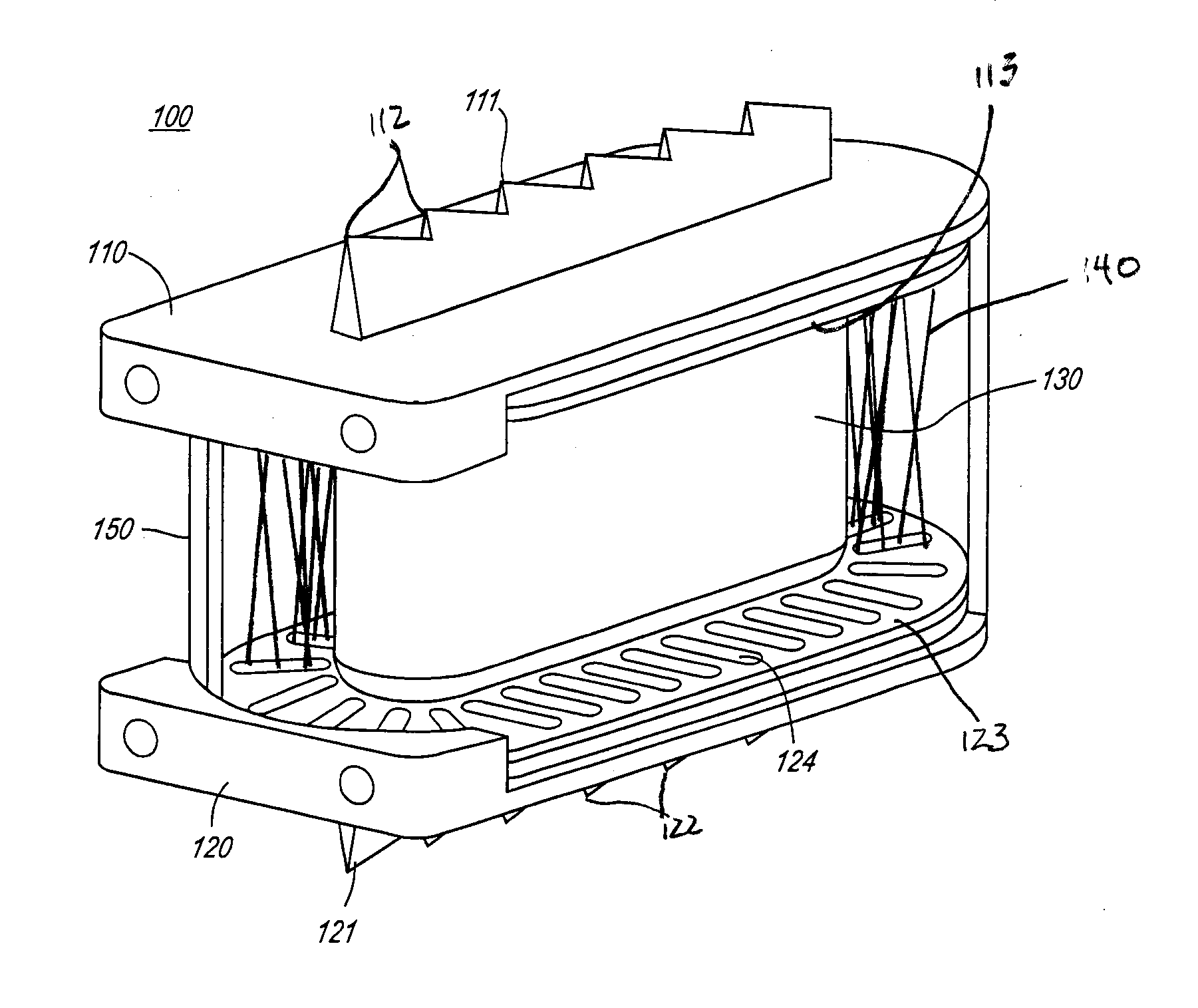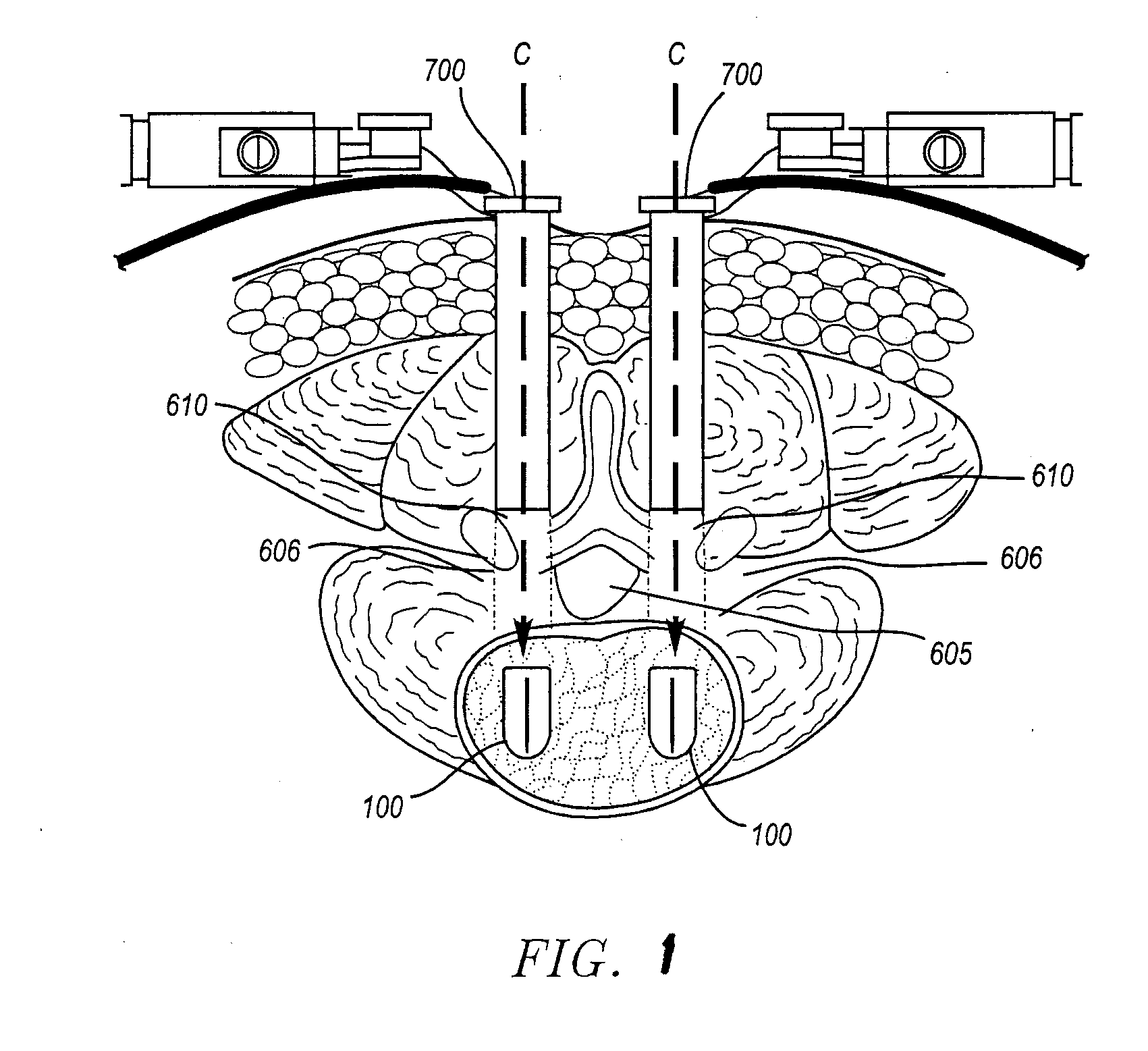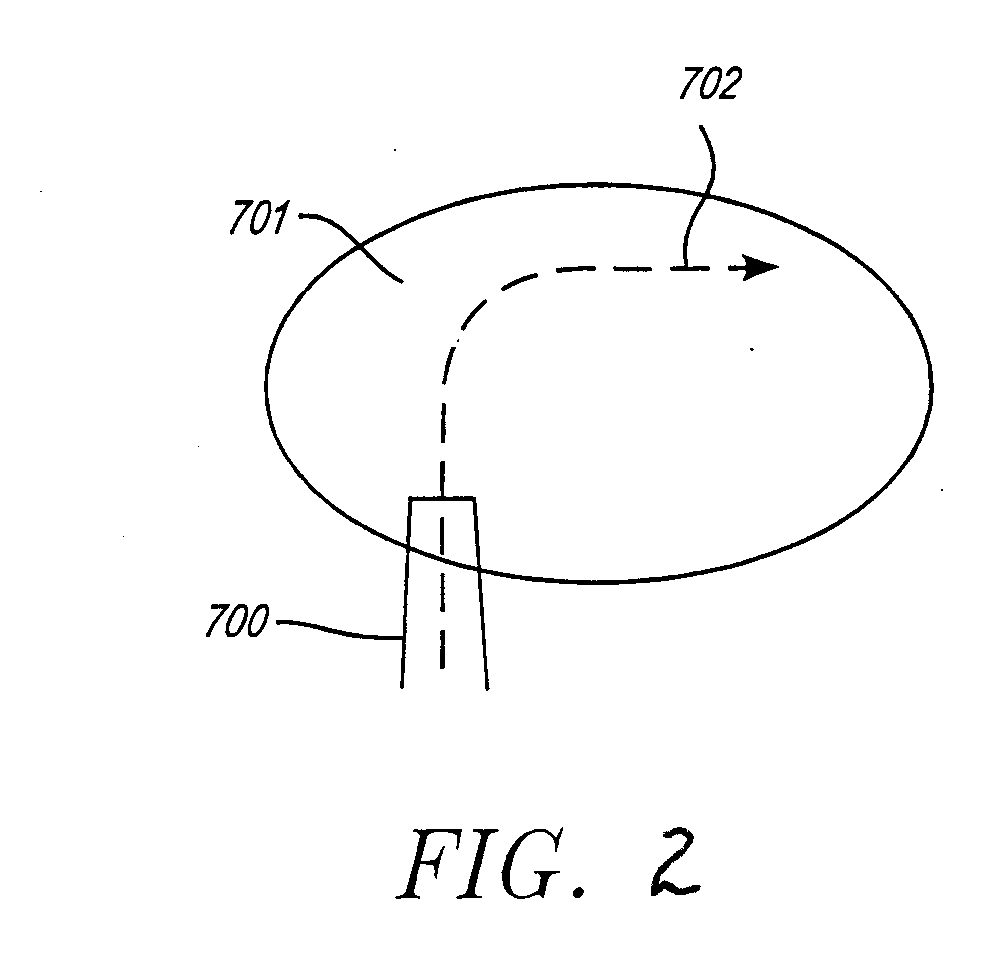Prosthetic intervertebral discs implantable by minimally invasive surgical techniques
a technology of prosthetic intervertebral discs and minimally invasive surgery, which is applied in the field of prosthetic intervertebral discs implantable by minimally invasive surgical techniques, can solve the problems of degenerative changes at adjacent mobile segments, pain or paralysis in the area of their distribution, and the displaced or damaged spinal discs, etc., and achieves high modulus of elasticity and high tenacity.
- Summary
- Abstract
- Description
- Claims
- Application Information
AI Technical Summary
Benefits of technology
Problems solved by technology
Method used
Image
Examples
Embodiment Construction
[0023] Prosthetic intervertebral discs, methods of using such discs, apparatus for implanting such discs, and methods for implanting such discs are described herein. It is to be understood that the prosthetic intervertebral discs, implantation apparatus, and methods are not limited to the particular embodiments described, as these may, of course, vary. It is also to be understood that the terminology used herein is for the purpose of describing particular embodiments only, and is not intended to be limiting, since the scope of the present inventions will be limited only by the appended claims.
[0024] Insertion of the prosthetic discs may be approached using a conventional procedure, such as a posterior lumbar interbody fusion (PLIF) or transforaminal lumbar interbody fusion (TLIF). For the PLIF procedure the spine is approached via midline incision in the back and the erector spinae muscles are stripped bilaterally from the vertebral lamina at the required levels. A laminectomy is t...
PUM
 Login to view more
Login to view more Abstract
Description
Claims
Application Information
 Login to view more
Login to view more - R&D Engineer
- R&D Manager
- IP Professional
- Industry Leading Data Capabilities
- Powerful AI technology
- Patent DNA Extraction
Browse by: Latest US Patents, China's latest patents, Technical Efficacy Thesaurus, Application Domain, Technology Topic.
© 2024 PatSnap. All rights reserved.Legal|Privacy policy|Modern Slavery Act Transparency Statement|Sitemap



